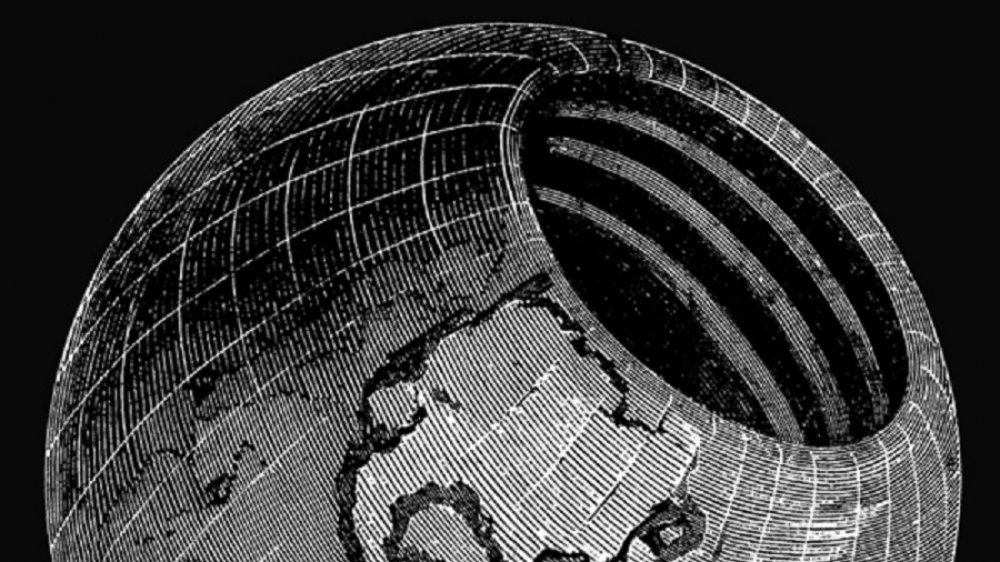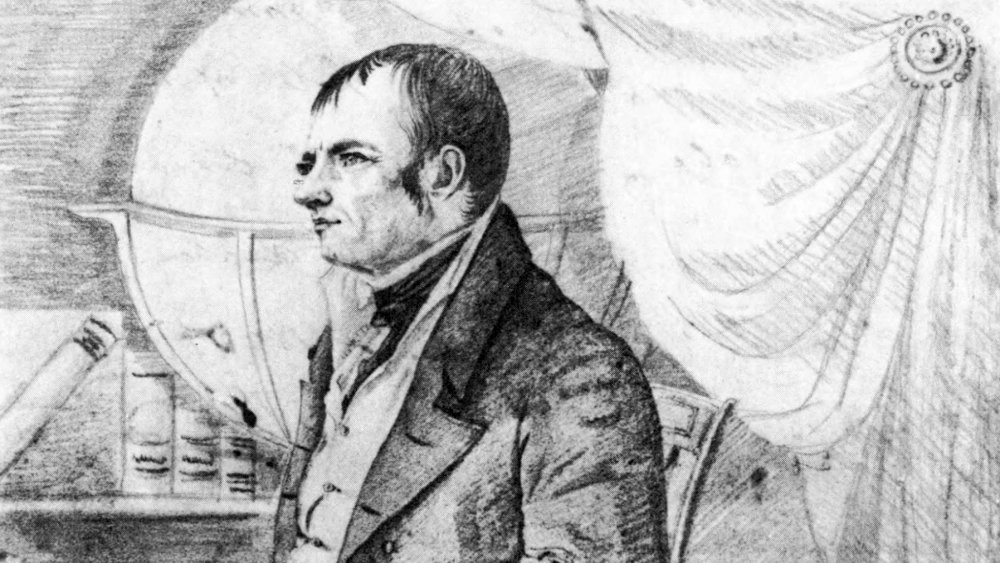The Crazy True Story Of The Man Who Thought The Earth Was Hollow
The Earth's core: rumbling, roiling, malleable nickle and iron encapsulating a center space of plasma, that generates an electromagnetic field. As PBS states, the magnetosphere shields the planet from solar winds and redirects cosmic particles towards the poles, to give areas like Norway fantastic views of the Aurora Borealis. The core, as National Geographic explains, is surrounded by a mantle of rock and a brittle, and an outer crust fragmented into sliding tectonic plates. Through a process called planetary differentiation, denser metals moved towards the core of Earth, over the course of the planet's development, and now the surface of the core is as hot as the surface of the sun.
Now: forget all that factual science stuff, and imagine that under Earth's crust there's ... nothing. Just an empty space, or maybe four shells, perhaps, accessible by holes at the poles — and within that space an entire world full of plants and animals. Not a mythical place of punishment from the gods, no, but a real, physical otherworld, right under the one you know. This was once a serious hypothesis, proposed by war veteran and lay naturalist, John Cleves Symmes, Jr., in his 1818 theory of the Hollow Earth.
Long before modern Hollow Earthers — along with Flat Earthers, a funnily contradictory theory) — started spinning beliefs about reptilians, underground giants, Freemasons, UFOs rising from the hollow core of the Earth, as laid out in the Hollow Earth Insider, Symmes was doing his thing, for the progress of misinformation.
World inside a world
"I declare the earth is hollow, and habitable within."
Such were Symmes' words, as stated on Find a Grave. They summarize his "Theory of Concentric Spheres and Solar Voids," as memorialized by a tiny hollow earth statue on his gravestone. How he arrived at this conclusion is as baffling as it is fascinating.
Symmes, as the Smart Set explains, was a veteran with a grade-school education, and a voracious appetite for reading, whose father was a real estate tycoon. Symmes ingested countless scientific works, but real facts only fueled his own conjecture, in true confirmation bias-style. Driftwood and debris floating up onto beaches? Must've bubbled up from inside the Earth. What, "Symmes Holes" at the poles aren't possible, because those areas had already been explored? No matter: the region hadn't been explored well enough to disprove him. Three concentric spheres inside the outer, surface-level landmass is too ludicrous? Fine, there's only one, but its big enough for everyone.
All the while, his popularity as a speaker grew and grew. Expeditions to the poles were a fashionable challenge at this point in history, and Symmes spent much of his time trying to convince others to fund an expedition of 100 men to the North Pole, to prove that he was right. He died in 1829, before this could happen. In his passing, though, he stands as a benchmark for "alternative facts" thinking, one of many who refute absolute truth for whatever version of reality they desire.

